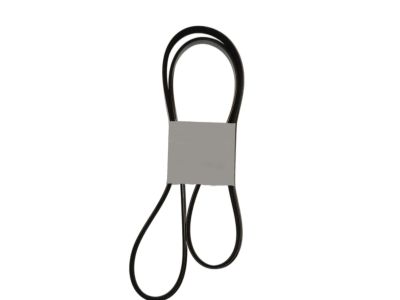×
- Hello
- Login or Register
- Quick Links
- Live Chat
- Track Order
- Parts Availability
- RMA
- Help Center
- Contact Us
- Shop for
- Nissan Parts
- Nissan Accessories

My Garage
My Account
Cart
Genuine Nissan Altima Drive Belt
Serpentine Belt- Select Vehicle by Model
- Select Vehicle by VIN
Select Vehicle by Model
orMake
Model
Year
Select Vehicle by VIN
For the most accurate results, select vehicle by your VIN (Vehicle Identification Number).
21 Drive Belts found
Nissan Altima Fan & Alternator Belt
Part Number: 11720-3TA0A$53.42 MSRP: $78.80You Save: $25.38 (33%)Ships in 1-3 Business DaysNissan Altima Fan & Alternator Belt
Part Number: 11720-JA10B$59.66 MSRP: $88.00You Save: $28.34 (33%)Ships in 1-2 Business DaysNissan Altima Alternator Belt
Part Number: 11950-8J100$37.24 MSRP: $59.40You Save: $22.16 (38%)Ships in 1-3 Business DaysNissan Altima Fan & Alternator Belt
Part Number: 11720-3WS0B$47.65 MSRP: $75.20You Save: $27.55 (37%)Ships in 1-2 Business DaysNissan Altima Fan & Alternator Belt
Part Number: 11720-6N200$36.53 MSRP: $50.32You Save: $13.79 (28%)Ships in 1-2 Business DaysNissan Altima Compressor Belt
Part Number: 11920-8J110$33.29 MSRP: $45.85You Save: $12.56 (28%)Ships in 1-3 Business DaysNissan Altima Fan & Alternator Belt
Part Number: 11720-JA00A$52.47 MSRP: $77.40You Save: $24.93 (33%)Ships in 1-2 Business DaysNissan Altima Alternator Belt
Part Number: 11720-3JA0A$47.65 MSRP: $75.20You Save: $27.55 (37%)Ships in 1-3 Business DaysNissan Altima Belt Assembly
Part Number: 31240-1XF0B$302.77 MSRP: $417.03You Save: $114.26 (28%)Ships in 1-3 Business DaysNissan Altima Fan & Alternator Belt
Part Number: 11720-3WS0C$47.65 MSRP: $75.20You Save: $27.55 (37%)Ships in 1-3 Business DaysNissan Altima Fan & Alternator Belt
Part Number: 11720-9E001$28.05 MSRP: $38.63You Save: $10.58 (28%)Ships in 1-3 Business DaysNissan Altima Fan & Alternator Belt
Part Number: 11720-8J000$36.53 MSRP: $50.32You Save: $13.79 (28%)Nissan Altima Compressor Belt
Part Number: 11920-9E005$28.30 MSRP: $38.98You Save: $10.68 (28%)Ships in 1-3 Business DaysNissan Altima Chain Oil Pump
Part Number: 33152-29X0B$6.86 MSRP: $9.45You Save: $2.59 (28%)Ships in 1-3 Business DaysNissan Altima Air Pump Belt
Part Number: 11720-6CA0A$46.85 MSRP: $69.10You Save: $22.25 (33%)Ships in 1-3 Business DaysNissan Altima Fan & Alternator Belt
Part Number: 11720-JA80A$50.76 MSRP: $74.88You Save: $24.12 (33%)Ships in 1-3 Business DaysNissan Altima Air Pump Belt
Part Number: 11720-5NA0B$57.74 MSRP: $97.95You Save: $40.21 (42%)Ships in 1-2 Business DaysNissan Altima BELT-FAN & ALTERNATOR
Part Number: 11720-9HF0A$48.85 MSRP: $72.07You Save: $23.22 (33%)
| Page 1 of 2 |Next >
1-20 of 21 Results
Nissan Altima Drive Belt
If you need any OEM Nissan Altima Drive Belt, feel free to choose them out of our huge selection of genuine Nissan Altima Drive Belt. All our parts are offered at unbeatable prices and are supported by the manufacturer's warranty. In addition, we offer quick shipping to have your parts delivered to your door step in a matter of days.
Nissan Altima Drive Belt Parts Questions & Experts Answers
- Q: What are the steps and considerations for inspecting and replacing a serpentine drivebelt on Nissan Altima?A: These models have a serpentine drivebelt with a tensioner that can self adjusting. Drivebelts are very important for the operation of the engine, since their tension and state depends of the type of the belt on the one hand and the high stresses that they are experiencing on the other hand, thus, they have to be inspected periodically. The serpentine drive belt transfers power to all the accessories in the car. Switch off the engine then, detach the front cover then locate the drivebelt. With the help of a strong light source, it is possible to examine such issues as the separation of the adhesive rubber, core separation, severed core, crack or separation of ribs and worn or torn ribs. Twist the belt and feel its back to check for any problems such as heir and fray on both surface of the belt. If some issues are detected, the belt should be changed. Also measure the amount of stretch by looking at the drivebelt indicator; when the indicator notch gets to the solid line of the dial, the belt has traveled too far and needs to be replaced. To replace the drivebelt, start by disconnecting the cable on the negative terminal of the battery, then unlock the right front wheel lug nuts, then safely raise the car with jackstands, and finally, remove the right splash guard inner fender and engine cover if available. If the belt tensioner is of the serpentine type then turn the belt tensioner clockwise to gain access to the drivebelt and while doing so the tension in the belt will be released but the tensioner pulley bolt need not be loosened in any way. Drivebelt from the tensioner and other accessory, put the newly purchased drivebelt and make sure to route it properly. Connect the battery terminals and do other Types of learning procedures if required. For all of the tensioners except the 2011 and newer four-cylinder models, first, take off the drivebelt, then the fasteners that hold the tensioner. Removal is the opposite of installation; the tensioner mounting fasteners are tightened to the recommended torque. On 2011 and later four-cylinder models, the tensioner and water pump pulley are integrated, so the two pieces must be replaced together not only that, four-cylinder models require removal of the drive belt, power steering reservoir, supporting the engine, and removing the right engine mount and tensioner/pulley assembly, then reverse the process.
Related Nissan Altima Parts
Browse by Year
2024 Drive Belt 2023 Drive Belt 2022 Drive Belt 2021 Drive Belt 2020 Drive Belt 2019 Drive Belt 2018 Drive Belt 2017 Drive Belt 2016 Drive Belt 2015 Drive Belt 2014 Drive Belt 2013 Drive Belt 2012 Drive Belt 2011 Drive Belt 2010 Drive Belt 2009 Drive Belt 2008 Drive Belt 2007 Drive Belt 2006 Drive Belt 2005 Drive Belt 2004 Drive Belt 2003 Drive Belt 2002 Drive Belt 2001 Drive Belt 2000 Drive Belt 1999 Drive Belt 1998 Drive Belt 1997 Drive Belt 1996 Drive Belt 1995 Drive Belt 1994 Drive Belt 1993 Drive Belt






































